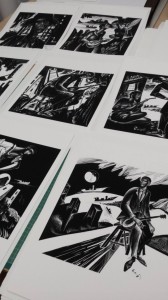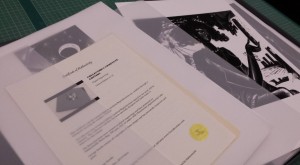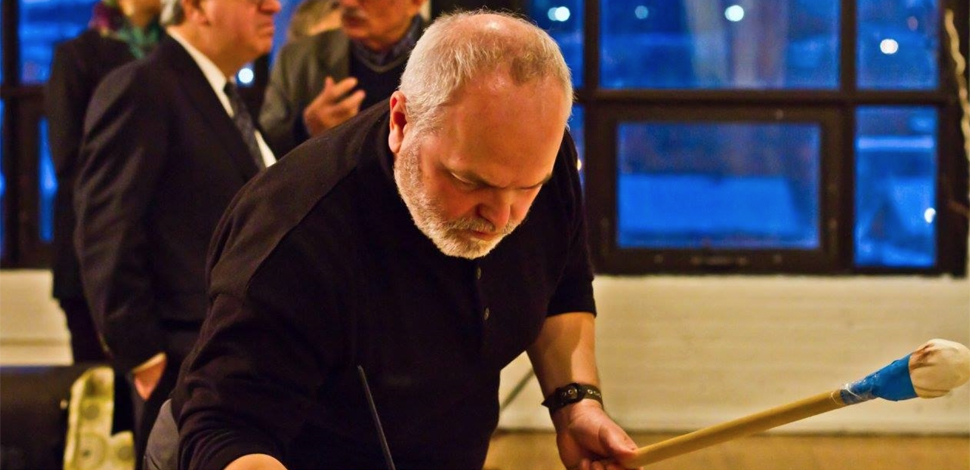Written by Lesia Maruschak
World renowned artist George Kordis is an interpreter of man’s relationship with man. This curious and ever evolving artistic genius has a passion for engaging the spectator in what is a living artform with a surrealistic expressionistic voice.George Kordis’ works are created for all to enjoy and presenting them on Hahnemühle’s FineArt Paper is the closest means of recreating the sensual experience of the original.
1. When did you discover your passion for art?
This is an interesting story. I was an enthusiastic sportsman and soccer was my beloved! At the age of 17 I dropped by to visit a friend who was taking art lessons. I was curious … very curious. I observed what he had done, picked up a pencil and drew a line. The rest is history … art history, I suppose.
2. Do you have a day job? What is it? What does it mean to you?
I am an artist and this has no boundaries. Whether I am painting frescoes in sacred spaces around the world or drawing on napkins and transforming the mundane into art, I am always seeking to reveal beauty through the eyes of peace, unity and love.
3. What mediums do you work with?
My mediums are diverse. Egg tempera is something I am closely associated with; however, the use of digital devices to create engravings, that will find their spot in art history, and my experimentation with encaustics are mediums that I have been working with recently. Charcoal, pencil, ink, watercolor and others are all part of my artistic portfolio and are drawn on as required. I have even been known to work with soya foam on a hot chocolate. Art truly has no boundaries.
4. What are you currently reading, listening to or looking at to fuel your work?
Music and poetry are my inspirational keystones. From soulful renditions of Rebetiko (Greek Popular Songs of Suffering and Sorrow) that are the heart of my upcoming Paris exhibition, to Neil Young’s “Heart of Gold” and Samuel Barber’s Adagio For Strings, I embrace music as a means of reaching my creative center. Literature is like my left hand. I have illustrated the verses of various Greek poets whom I admire and who have moved me: Eggonopoulos, Seferis, and Elytis are among them. Then there is Chekov with his story, “On The Sea” that serves as a lifeline in my art.
5. How do you navigate the challenges of the art world?

The creation of Terra Ercolano is a means of revealing my contemporary art and making it accessible. This joint venture with Lesia Maruschak presents
collaborative art performances, innovative exhibitions, and wearable fashion inspired by my surrealistic expressionistic interpretation of man’s relationship with man and her capacity for synthesis and restatement. A focus on art, exhibition and the collector community are central to being relevant in the 21st century art world.
6. Has there been a shift or change in your life or work that has led to what you’re making now? Do you see your work as autobiographical at all?
Life is fluid and evolving and so is my art. I turned 60 recently and the thought of mortality is more dominant. I seek peace and to be united with that which I love forever. These simple, yet central precepts, will mostly likely find voice in my artistic creations.
7. Is there something you are currently working on, or are excited about starting that you can tell us about?
The movement in the direction of textile art or wearable art is something that is of great interest to me. Thinking that art can move from the gallery to the daily lives of individuals and be functional and integrated is exciting. The introduction of our “Art of the Pocket Square” is I think a world first and something I am proud of.
8. What do you want your work to do?
My body of surrealistic expressionistic works strive to express the quality of human relationships which embody our attitudes towards beauty, unity in life and love. There is an intrinsic complexity in these relationships which defies our ability to define them in a static manner. Expressing their fluid and interconnected view of the self in relation to others is possible by synergystically combining various artistic modes and and diverse cultural influences. The forms I create unviel a rhythm intrinsic to the human journey.
9. How do you achieve this artistic intent?
The body is the key element to express unity and peace. In bringing every element of the body into dialogue with each other, images are reshaped into a
locus of pictorial interaction that is not confined within the limits of the canvas. Through line, color and light rhythm is achieved and the images acquire a third dimension. They exit the painting surface to unite with the spectator in space and time in an organic manner engaging the spectator’s senses and offering peace, love and unity simultaneously. The radiant images, suffused with the luminous presence of the transcendent, can be understood as domains of interactive communication that facilitate the beholder’s corporeal encounters with the intangible. The works are contemporary, accessible facilitate communication and connection in a world that is ever more isolated and disconnected.
10. Are you involved in any upcoming shows or events? Where and when?
This November my works will be featured in three solo exhibitions, two art performances and a lecture at the Sorbonne. Then for 2016 we are off to Taipei and then back again to Paris. Programming for the remainder of the year is unfolding and promises to be equally exciting.
• 6 November – 4 January Bucharest, Romania: KORDIS Contemporary Iconography: Heaven on Earth Exhibition
• 13 November – 1 December – Paris: Melkart Gallery – Rebetiko Exhibition (Digital Engravings)
• 16 November – Paris: Private Salon with Live Art Performance (Exclusive, by invitation on Paris Art Collectors Group)
• 18 November – Paris: Sacred Art Performance Accompanied by Byzantine Choral Group
• 18 November – Paris: Sorbonne Art Workshop
• 13-28 November – Paris: Desmos Gallery – Love Doesn’t Ask What Love Is Exhibition
11. Tell us more about your Paris Rebetiko Exhibition.
 This exhibition is the world premiere of a series of digital engravings. The matching of the William Turner Paper for the pieces has been perfect. Our
This exhibition is the world premiere of a series of digital engravings. The matching of the William Turner Paper for the pieces has been perfect. Our
collector’s TERRAARTBOX of the entire series of 15 works will be produced on the Cotton Rag Fine Art Paper and presented in a specially designed gift box handmade in Athens. Only 10 pieces will be available worldwide.
12. Which is your favorite Hahnemühle paper and why?
One of the papers we select repeatedly for my Limited Edition Archival Reproductions is the William Turner FineArt Paper that is a genuine mold-made 100% cotton paper, 310 gsm. Much of my original art is rendered in the ancient egg tempera medium. When it is applied to a gessoed substrate the tactile sensation is unique and unmistakable. The William Turner is the closet that we can come to bringing that same sensual experience to the collector of the Archival Reproductions. Given the importance we place on ensuring all collectors have a similar encounter with my art, selecting a paper that is best able to reproduce the original in all of its qualities is of utmost importance.
Terra Ercolano Art Advisory represents George Kordis worldwide. info@TerraErcolano.com








